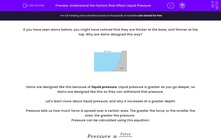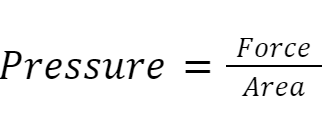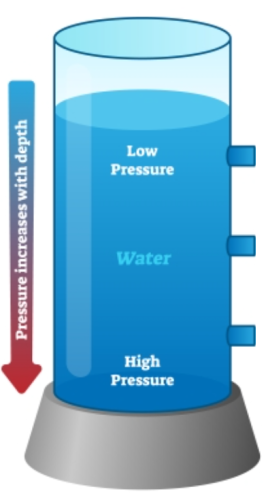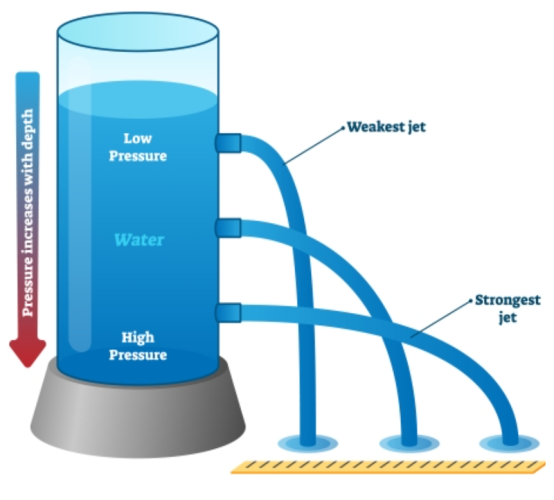If you have seen dams before, you might have noticed that they are thicker at the base, and thinner at the top. Why are dams designed this way?
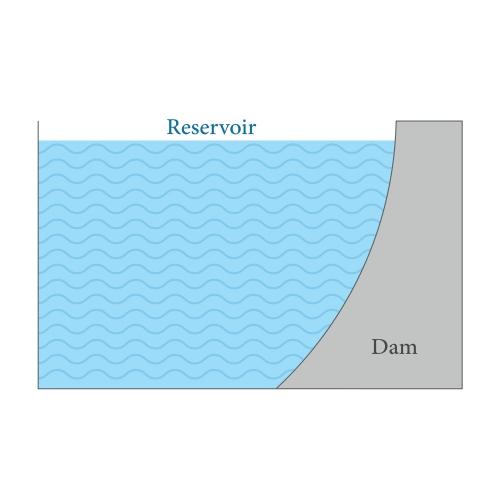
Dams are designed like this because of liquid pressure. Liquid pressure is greater as you go deeper, so dams are designed like this so they can withstand that pressure.
Let's learn more about liquid pressure, and why it increases at a greater depth!
Pressure tells us how much force is spread over a certain area. The greater the force, or the smaller the area, the greater the pressure.
Pressure can be calculated using this equation:
Pressure is typically measured in Pascals (Pa). Force is measured in Newtons (N) and area is measured in metres squared (m2).
In liquids, like water, the particles are close together and touching, but they are arranged randomly. The particles can flow and move.
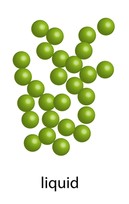
These liquid particles collide with each other, as well as any nearby surfaces, when they move. This is what causes liquid pressure.
So, why do we design dams to be thicker at the base? It's because the deeper the water, the greater the pressure.

In liquids, the pressure depends on the weight of the water above it. The greater the weight of water above, the greater the pressure. This is why the pressure in deep water is significantly greater than the pressure close to the surface of water.
The liquid pressure on an object 1,000 metres under water is 1,000 times greater than the liquid pressure on that object if it was 1 metre under water!
We can actually demonstrate this principle using a simple experiment. We will take a tall plastic tube or measuring cylinder, and drill four holes into it at different heights.
If we then quickly fill the container with water, we can observe the jets of water leaving each of the holes. We can measure the horizontal distance the jet travels using a ruler, as an indicator of the pressure in the liquid.
The greatest pressure here is close to the base of the container, and the lowest pressure is at the top. How will the pressure difference affect the jets of water?
As you can see, the jet of water from the deepest point in the container travelled the furthest horizontal distance. The weakest jet of water, that travelled the least distance, came from the top of the container, where the liquid pressure was the lowest.
Now that we understand the link between depth and liquid pressure, let's try some questions!

